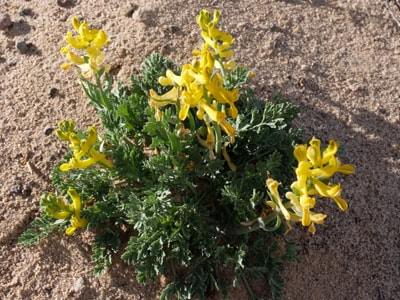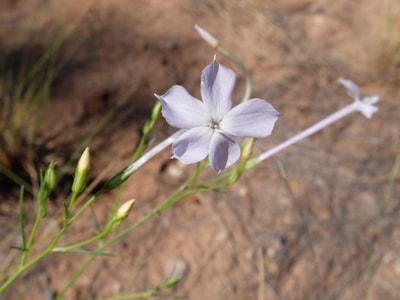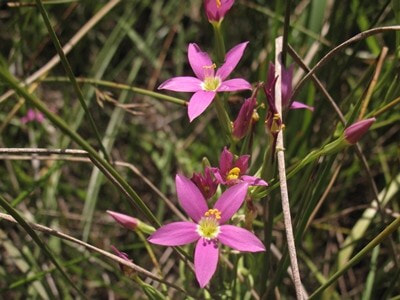|
The Bloom Blog Blooming this week in the environs of Abiquiú By Wildflowers of the Southern Rocky Mountains By Marilyn Phillips
Found in dry, disturbed areas, on slopes Seen blooming in April in Arroyo Trujillo Another early bloomer, Golden Smoke grows to about 12 inches tall and is easily recognized by the irregular yellow flowers in long, loose clusters and its finely divided, bluish-green leaves. The seed pods are bean-like and curve upwards. Corydalis species are potentially toxic in moderate doses. However, a tea made from the plant is used in the treatment of painful or irregular menstruation, diarrhea, bronchitis, heart diseases, sore throats and stomach aches. Externally, it is used as a lotion on backaches, hand sores etc. and as a gargle for sore throats. Source. If you trying to identify a different flower then you can check what other flowers bloom this month. If you cannot identify a flower from the website send a photo and where you took it to [email protected]. Read online for tips.
0 Comments
Found in dry, sandy, gravelly areas
Seen blooming in March on the Pajaro Trail below Abiquiu Dam The first blooms I saw this year were New Mexico False Carrots. Flowers in the Parsley family bloom early and have tiny flowers with five petals in usually flat heads. This family is also commonly called Parsley or Celery. The New Mexico False Carrot grows to 8 inches high in a dense bright green tuft with dry stalks from the previous year. The flowers bloom on stalks barely 2 inches high which elongate with age. Leaves are divided into narrow segments. It is listed as a New Mexico Rare Plant but it is not difficult to find in Plaza Blanca and Red Wash Canyons. Source. No traditional uses could be found but other members of this family are edible. If you trying to identify a different flower then you can check what other flower bloom this month. If you cannot identify a flower from the website send a photo and where you took it to [email protected]. Read online for tips. Found in disturbed, muddy places
Seen blooming in September at Abiquiu Lake A walk around the peninsula at Abiquiu Lake has changed since the water level rose so high in the spring. In places there is now a broad green carpet of vegetation between the high-water mark and the current water level. Plants to be seen are Bracted Vervain, Cocklebur, Spotted Lady’s Thumb, Crownbeard, Ragweed, and two kinds of Flatsedge; all plants that like a moist environment and are not usually seen around Abiquiu Lake. I wonder what spring will bring. Rusty Flatsedge is a grass that can grow from 4 to 20 inches tall, these are about 8 inches. Grasses are wildflowers too but their flowers do not need to be showy to attract the birds and the bees because they are pollinated by the wind. Flatsedge stems are sharply three-sided. Its golden flower spikes turn rusty with age. As its name implies, the roots have a floral fragrance when crushed. Traditionally the seeds were eaten. If you are trying to identify a different flower then you can check what other flowers bloom this month. If you cannot identify a flower from the website, send a photo and where you took it to [email protected]. Read online for tips. Found in open, sandy areas
Seen blooming in September by Arroyo Trujillo This delicate plant can grow to 40 inches tall with many branches and slender grey-green leaves and stems. Flowers are white, light blue or lavender with a floral tube up to 3 inches long. It blooms from spring to fall depending on the rains, as so many plants do. Native Americans used the plant in quite a variety of ways. An infusion of the roots was used to eliminate the ozone in cases of lightning shock. A decoction of the leaves was taken for stomachache, crushed leaves and flowers were steeped into a tea that was taken for headaches, used on sores, for arthritis, as an eyewash, and served as a hair tonic to prevent baldness and lengthen the hair. The plant was chewed together with salt to treat heartburn. An infusion of the flowers was mixed with feed and given to sheep with stomach disorders. A cold infusion of the plant was applied daily to heal the incision in a castrated colt. The Zuni people used a poultice of the dried, powdered flowers to remove hair on newborns and children. Source. If you are trying to identify a different flower then you can check what other flowers bloom this month. If you cannot identify a flower from the website, send a photo and where you took it to [email protected]. Read online for tips. Arizona Centaury, Arizona Mountain-Pink, Zeltnera arizonica, Gentian Family (Gentianaceae)9/15/2023 Found in moist, open areas, stream sides
Seen blooming in September by the Rio Chama Most of the flowers at this time of the year are yellow so it is a pleasure to see a pop of pink. Arizona Centaury grows to two feet tall with bright green upright stems. The leaves clasp the stems and are green, succulent and lance-shaped. The attractive flowers are one inch across and have five bright pink, narrowly oval petals, a white starburst center, and bright yellow stamens. I found no edible or medicinal uses for Arizona Centaury, it is just a pretty flower that blooms all summer. If you are trying to identify a different flower then you can check what other flowers bloom this month. If you cannot identify a flower from the website, send a photo and where you took it to [email protected]. Read online for tips. |
AuthorI am Marilyn Phillips, a native of England, whose love of nature and the outdoors from childhood brought me by a circuitous route to Crested Butte, Colorado in 1993 and 16 years later to northern New Mexico. My exploration of the many trails in these areas, my interest in wildflowers and photography, and career in computer system design came together in this creation. If you have any corrections, comments or questions, please contact me by email. Archives
September 2025
Categoriescopyright © 2020
|







 RSS Feed
RSS Feed